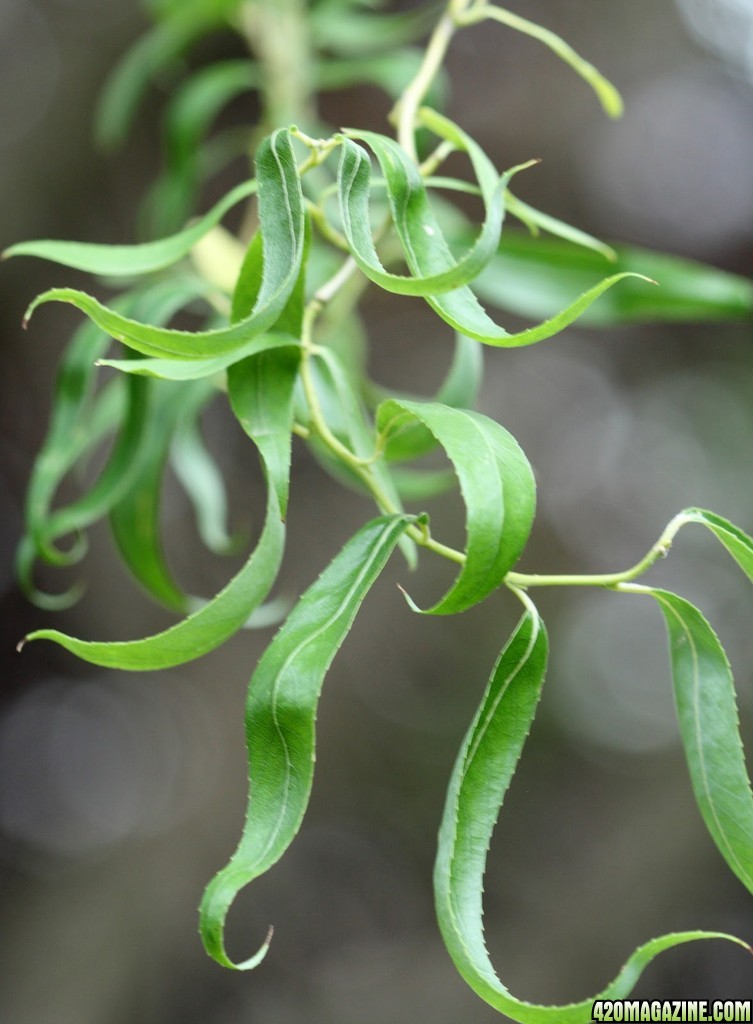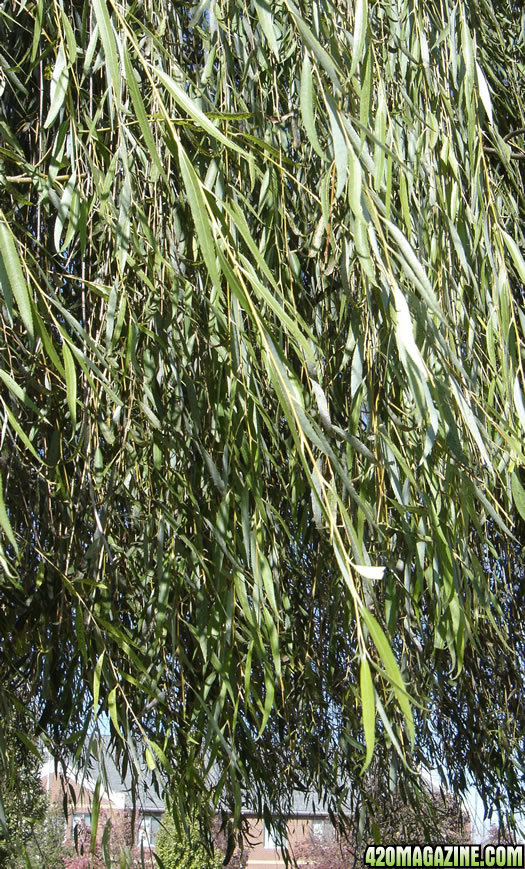USD Comment I have tried this on a MJ cutting, absolutely amazing results, 2 inch long root in 3 days, and 6 large root buds, compared to not even root buds on another cutting. Also the one I sprayed this tea on, the leaves have come back looking much healthier, than the were, the other one is still all yellowed 
Anyone who has ever tried to root willow cuttings has already discovered how ridiculously easy they are to propagate.
Take a cutting in early spring, put it in a glass of water, and in a few days the pale tendrils of new roots appear. Soon the cutting will be ready for potting up and, eventually, a new home in the garden.
Corkscrew Willow leaves in branch tips

Without a doubt, these are among the easiest of woody plants to propagate. And they do, in fact, make it easier to propagate cuttings of other plants, including tender perennials like plectranthus and coleus, and shrubs such as daphne, spirea, and weigela.
The reason is that willow cuttings secrete a kind of magic rooting compound—specifically a hormone called auxin—that stimulates spring growth and encourages the development of roots.
Corkscrew or Twisted Willow Tree

This hormone is most concentrated in the tips of branches showing new leaves in early spring. It also happens to be water-soluble, so any willow cuttings in a container of water are literally enriching that water with a substance that promotes root growth. Thus, cuttings of other plants in the same vessel are drawing in the willow’s auxin and responding to it by striking roots. Some rooting powders use artificially made auxin as the active ingredient.
Twisted Willow Stem

For the best results when using willow to help start cuttings, make your own auxin-rich concoction by gathering a handful of willow branch tips, then chopping them into pieces an inch or so long or mashing them with a hammer. Stuff as many pieces as you can into a small container, add water to cover, and steep for at least 24 hours to make a sort of auxin tea.
Weeping Willows

Strain the liquid and use it to soak cuttings overnight. Cuttings should be inserted into the liquid deeply enough so that it covers their stems up to about the first set of leaves.
After soaking, stick the cuttings in a soilless medium. I like to use a mix of half coarse sand and half peat.
Then place the pot and cuttings inside a plastic bag, making sure the plastic does not touch any leaves, and set it in a protected spot that’s bright but not sunny. Roots should form within a few weeks. While the roots are developing, you can use the willow tea to water the cuttings.

Willows can be a real boon for gardeners who want to learn more about the joys of propagating their own plants. By planting a few choice willows, such as pussy willow (Salix discolor) and black pussy willow (Salix gracilistyla var. melanostachys), you can be assured of a good source of auxin and a bountiful supply of attractive cuttings to force indoors. Cuttings of both willows can often be found at florist shops in early spring.

Anyone who has ever tried to root willow cuttings has already discovered how ridiculously easy they are to propagate.
Take a cutting in early spring, put it in a glass of water, and in a few days the pale tendrils of new roots appear. Soon the cutting will be ready for potting up and, eventually, a new home in the garden.
Corkscrew Willow leaves in branch tips

Without a doubt, these are among the easiest of woody plants to propagate. And they do, in fact, make it easier to propagate cuttings of other plants, including tender perennials like plectranthus and coleus, and shrubs such as daphne, spirea, and weigela.
The reason is that willow cuttings secrete a kind of magic rooting compound—specifically a hormone called auxin—that stimulates spring growth and encourages the development of roots.
Corkscrew or Twisted Willow Tree

This hormone is most concentrated in the tips of branches showing new leaves in early spring. It also happens to be water-soluble, so any willow cuttings in a container of water are literally enriching that water with a substance that promotes root growth. Thus, cuttings of other plants in the same vessel are drawing in the willow’s auxin and responding to it by striking roots. Some rooting powders use artificially made auxin as the active ingredient.
Twisted Willow Stem

For the best results when using willow to help start cuttings, make your own auxin-rich concoction by gathering a handful of willow branch tips, then chopping them into pieces an inch or so long or mashing them with a hammer. Stuff as many pieces as you can into a small container, add water to cover, and steep for at least 24 hours to make a sort of auxin tea.
Weeping Willows

Strain the liquid and use it to soak cuttings overnight. Cuttings should be inserted into the liquid deeply enough so that it covers their stems up to about the first set of leaves.
After soaking, stick the cuttings in a soilless medium. I like to use a mix of half coarse sand and half peat.
Then place the pot and cuttings inside a plastic bag, making sure the plastic does not touch any leaves, and set it in a protected spot that’s bright but not sunny. Roots should form within a few weeks. While the roots are developing, you can use the willow tea to water the cuttings.

Willows can be a real boon for gardeners who want to learn more about the joys of propagating their own plants. By planting a few choice willows, such as pussy willow (Salix discolor) and black pussy willow (Salix gracilistyla var. melanostachys), you can be assured of a good source of auxin and a bountiful supply of attractive cuttings to force indoors. Cuttings of both willows can often be found at florist shops in early spring.


